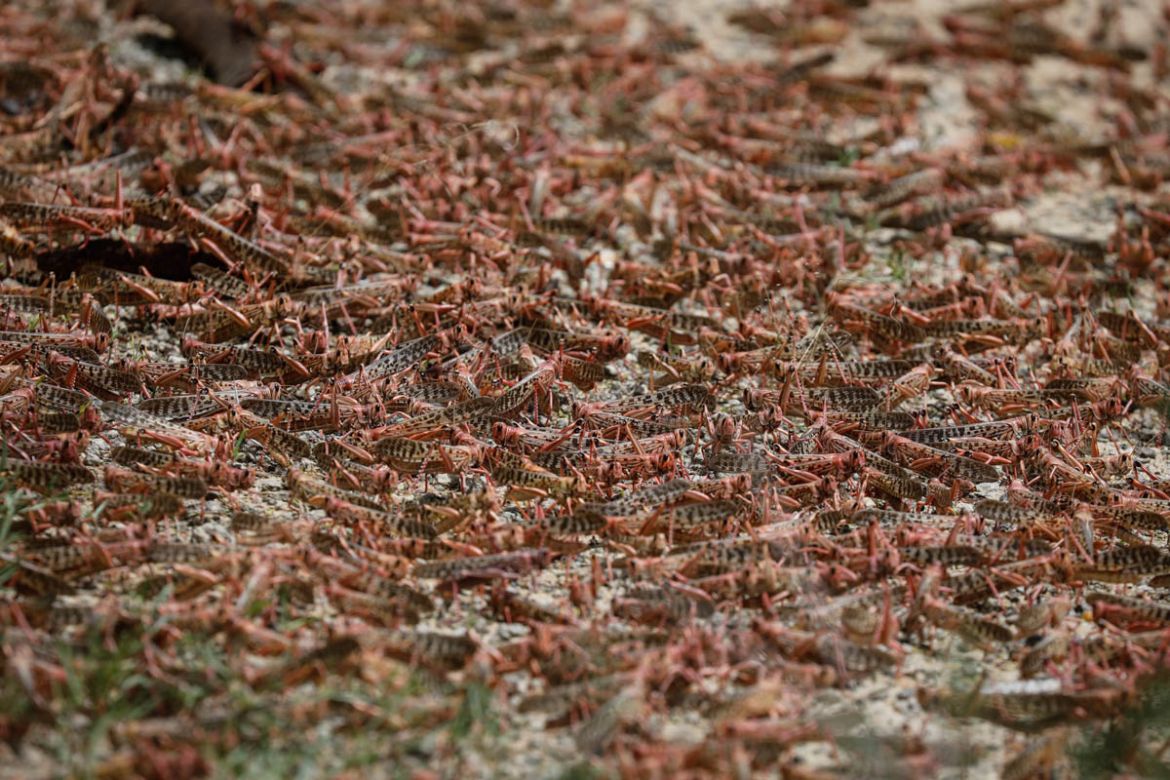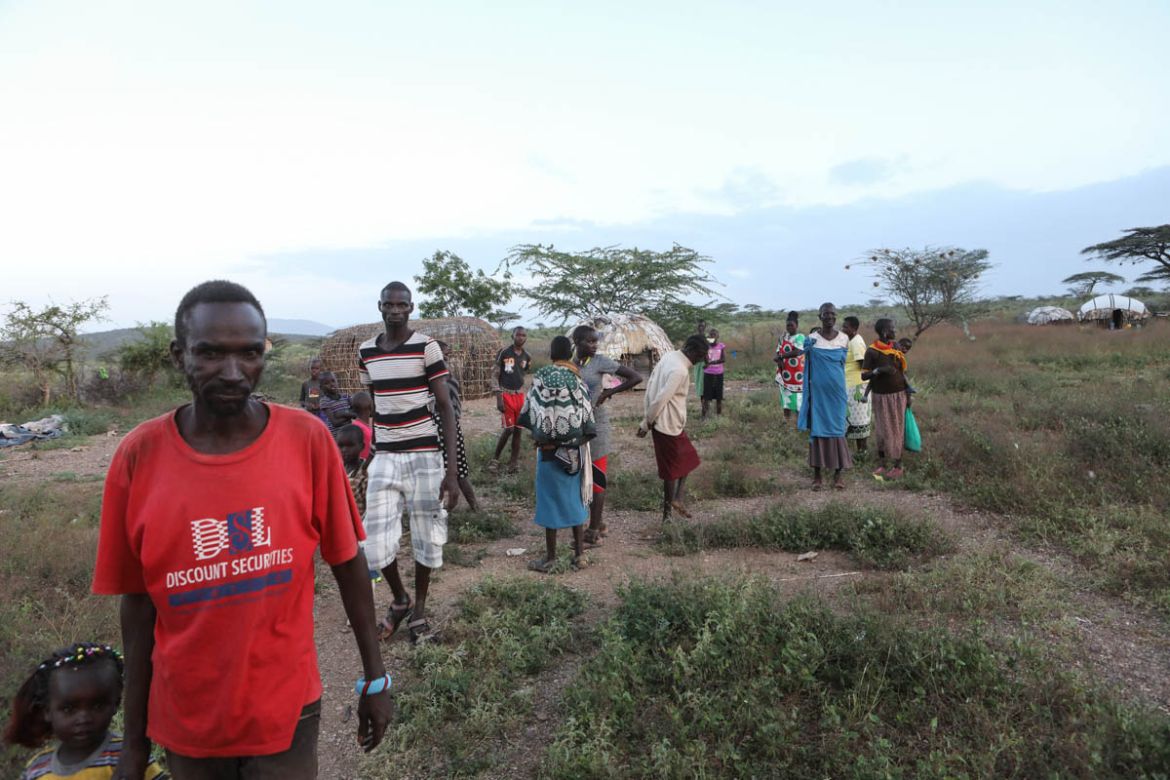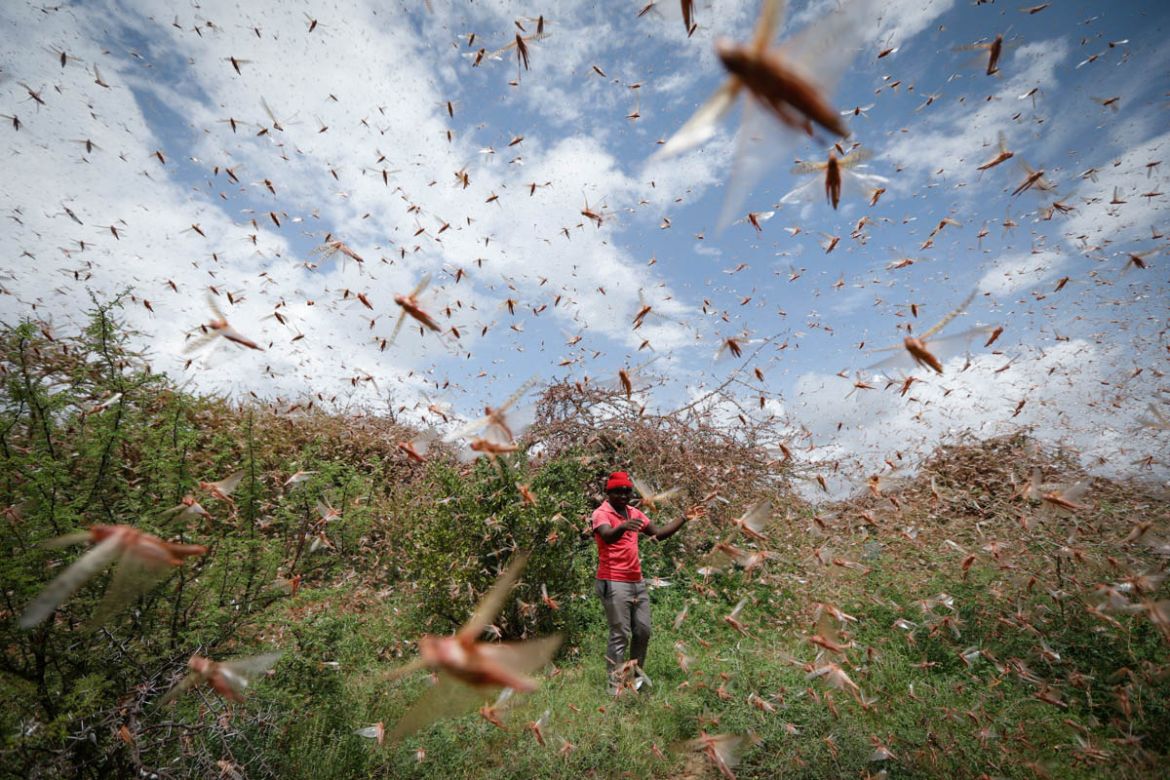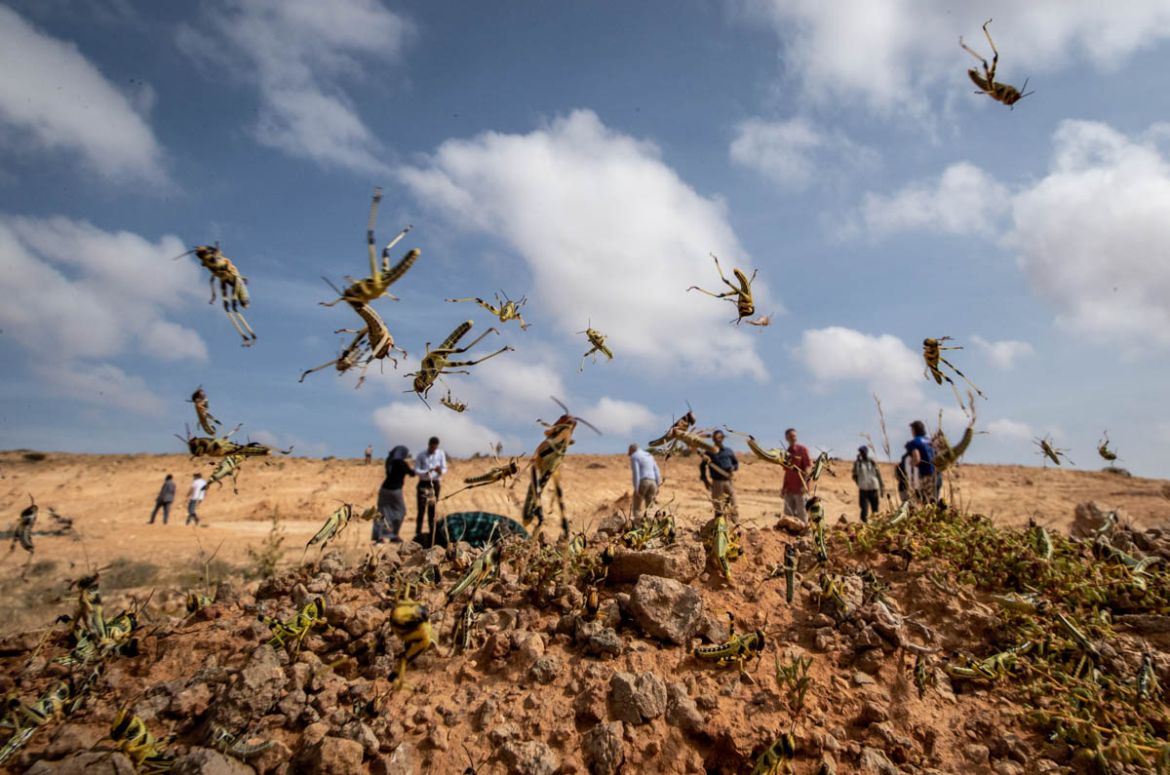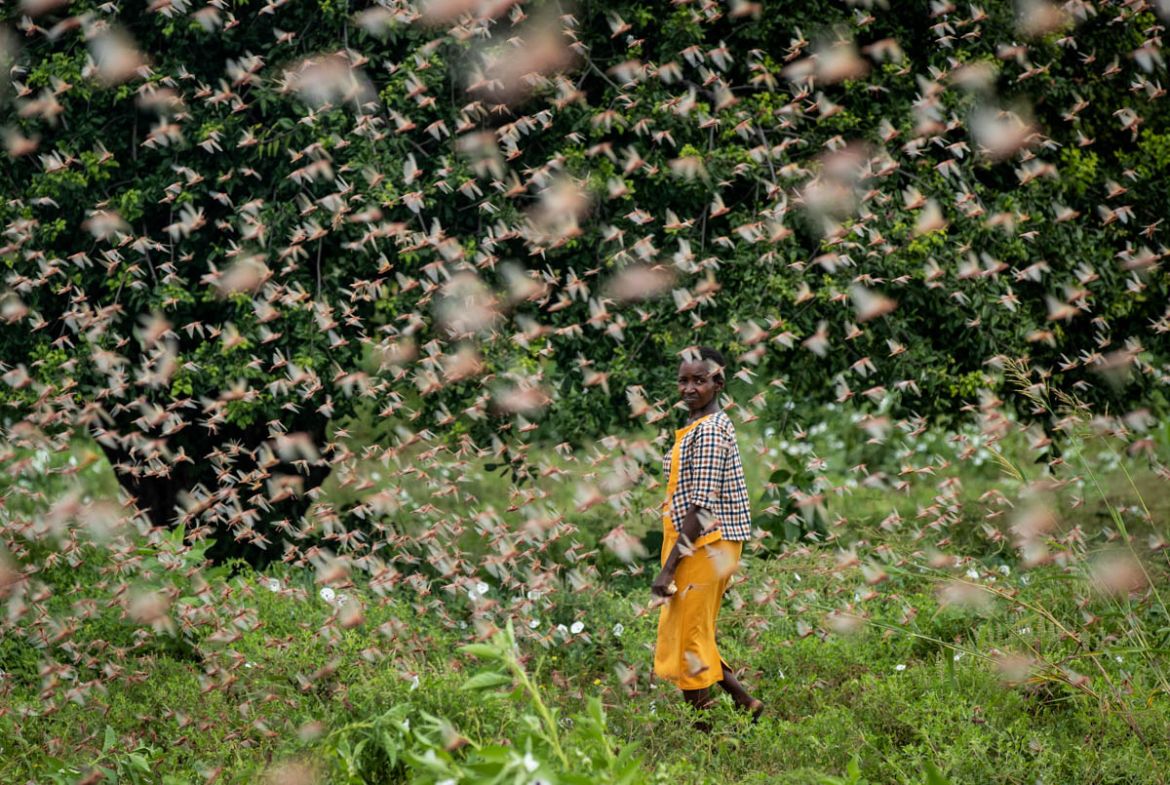In Pictures
In Pictures: Desert locusts swarm parts of East Africa
Locusts have invaded parts of eastern Africa, ravaging crops, decimating pasture and deepening a hunger crisis.
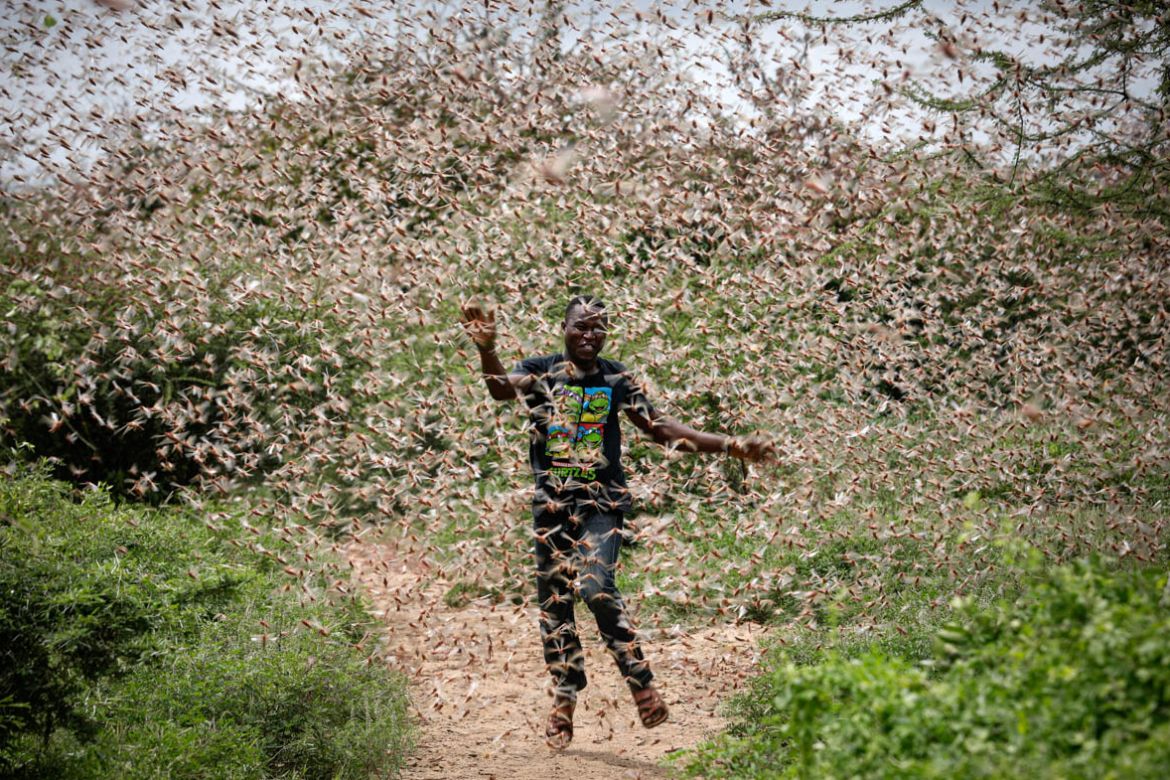
Uganda has scrambled to respond to the arrival of the biggest locust outbreak that parts of East Africa have seen in decades, while the United Nations warned that the already vulnerable region “simply cannot afford another major shock”.
An emergency government meeting, held hours after the locusts were spotted in Uganda, decided to deploy the military to help with ground-based pesticide spraying, while two planes for aerial spraying will arrive as soon as possible, a statement said. Aerial spraying is considered the only effective control.
The swarms of billions of locusts have been destroying crops in Kenya, which hasn’t seen such an outbreak in 70 years, as well as Somalia and Ethiopia, which haven’t seen this in a quarter-century. The insects have exploited favourable wet conditions after unusually heavy rains and experts say climate change is expected to bring more of the same.
Keith Cressman, the UN Food and Agriculture Organization’s (FAO) senior locust forecasting officer, said Kenya has received “waves and waves of swarms” since the beginning of the year from the Horn of Africa, and “over the weekend they moved on the side of Mount Kilimanjaro across the border into Tanzania”.
“Also over the weekend, they moved into northeastern Uganda,” he told a news conference at UN headquarters in New York. “We’re expecting any day they will move across the border into the southeast corner of South Sudan,” where another several million people face hunger as the country struggles to emerge from civil war.
A medium-size swarm of locusts can eat the same amount of food as the entire population of Kenya, Cressman said, and “that swarm in one day can eat the same amount of food as everybody here in the tri-state area, New Jersey, Pennsylvania and New York. So not taking action in time – you can see the consequences.”
UN officials warn that immediate action is needed before more rainfall in the weeks ahead brings fresh vegetation to feed new generations of locusts. If left unchecked, their numbers could grow up to 500 times before drier weather arrives, they say.
“There is the risk of a catastrophe,” UN humanitarian chief Mark Lowcock told a briefing in New York on Monday, warning that 13 million people already face severe food insecurity – 10 million in places affected by locusts.
The locusts are eating the vegetation that supports vibrant herder communities in the region, and Kenya’s Ambassador to the UN Lazarus Amayo warned of the “inherent risk of communal conflict over pastures.”
The outbreak is so severe it might even disrupt the planting of crops in the coming weeks, he said, adding that the locusts “do wanton damage”.
